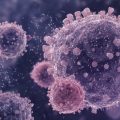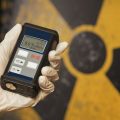Researchers have created a light multi-functional biomaterial that protects human tissues from harmful radiation.
Melanin is found in most organisms.animals and plants, as well as bacteria and fungi. Although this substance is mainly known for pigmentation, it also protects cells from radiation. Under ordinary terrestrial conditions, he effectively copes with his task, but he can not cope with the increased level of radiation (during air travel or radiation therapy).
Exposed to even greater radiation exposureastronauts who have a long stay inDNA begins to be damaged in open space, and during a trip to Mars a person can receive 700 times more radiation than on Earth. Therefore, scientists from Northwestern University decided to improve melanin, enriching it with selenium.
New biomaterial called selenomelaninmuch lighter and more elastic than traditional radiation protective materials such as lead. Therefore, it can be applied to human skin as a sunscreen, or used as a protective coating for cargo.
Although his samples are now being investigated on the ISS, butsurface tests showed that after receiving a dose of radiation that would be fatal to humans, only cells treated with the new compound showed a normal life cycle.
Human cells treated with selenomelanine nanoparticles.
Parallel tests have shown that some microorganisms can synthesize selenomelanin in the presence of a rich source of selenium in the environment.
Recall that in May, researchers also announced the development of a polymer composite that protects against radiation no worse than lead.
</p>




